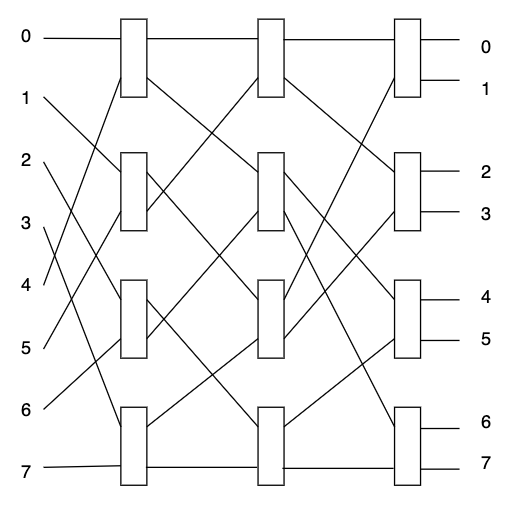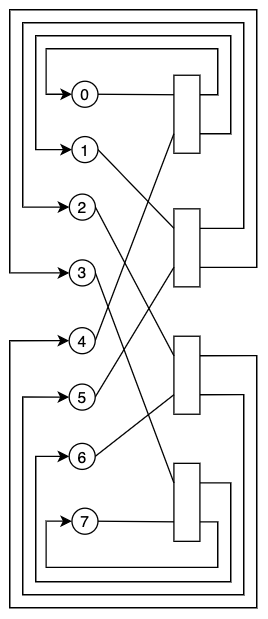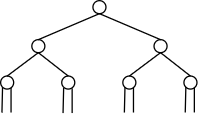24. Omega Networks
Apr 12, 2021
Omega Networks (cont.)

- omega networks built using shuffle exchange
- number of wires/nodes = 4
- Hardware cost
- Latency
- Work =
- everything is slowed down a log factor on this hardware
- there are embedded binary trees in the hardware → we can do associative ops in same time as PRAM:
How to enforce EREW/CREW/CRCW?
- EREW: runtime error if using the same wires
- CRCW: use combining switch that does combining
- remembers that outgoing message must follow along multiple wires
- broadcast reads on both output wires
Writes
- common: combine messages, do 1 write
- arbitrary: randomly drop message
- priority: compare sources and drop lower priority message
Not all permutations are possible → can have blocks
- such network is called blocking network
- combining does not help because the carried values may be different
- need higher bandwidth to carry more values
Are there non-blocking networks?
- yes, solution exists for non-blocking networks of depth
- on practice there exists depth
- simplest: omega network repeated
- routing of this network gets very complicated and requires an additional controller connected to all stages → controller computes route over
Pipelining
The logarithmic overhead of omega network does not always apply, e.g.
| 1 | |
| 2 | +1 |
| 3 | +1 |
- make
Recirculating Network
Idea is to use one stage to perform as if there were multiple stages.

Complications:
- each switch must have a counter to know which action to perform on input; counter is mod
- need to store
- pro:
- has same blocking issue, cannot pipeline
- this is not a universal hardware → need to know what you are doing when using it!
Prefix sum with omega network
Read 2 inputs, add, send up
